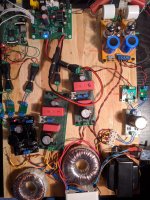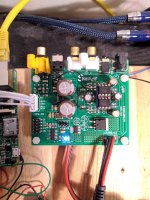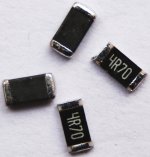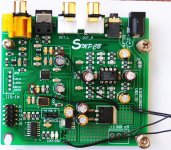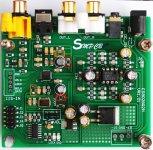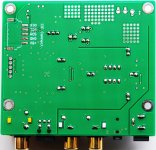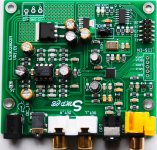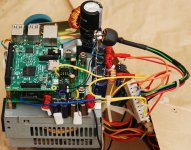I finally finished my mods.
I use dedicated power supply for the Raspberry, improves bass control and clarity of sound.
I attached the output that I applied to es9038q2m (recommended by Markw4 ... thanks).
I added an SRPP buffer to test the tube sound.
I am very satisfied with the result, now the sound is very similar to my UDA38PRO, obviously the valves have less controlled bass but the sound is now soft and not fatiguing, with good detail and stage.
Thank you all
I use dedicated power supply for the Raspberry, improves bass control and clarity of sound.
I attached the output that I applied to es9038q2m (recommended by Markw4 ... thanks).
I added an SRPP buffer to test the tube sound.
I am very satisfied with the result, now the sound is very similar to my UDA38PRO, obviously the valves have less controlled bass but the sound is now soft and not fatiguing, with good detail and stage.
Thank you all
Attachments
Mark, can you expand on the rationale in adding the AK4137 SRC...?
So far I think what it implements is to do sample rate conversion in hardware and external to the player thus reducing the player resource usage..?
Up-sampling allows for filtering (either in the SRC or following DAC...or both ?) where any adverse filter effects happen outside of the audio band ?
It can be used via i2s in from Raspberry Pi or usb to i2s board for other pc's ?
Anything else ?
I am considering one to put in front of an i2s dac and feeding from both a Pi i2s and several PC=>usb to i2s and switching sources with an i2s selector and also in the mix a AK4118 receiver to expand sources to include spdif.
AK4118 digital receiver board SPDIF to I2S with LCD Sampling Rate display | eBay
So far I think what it implements is to do sample rate conversion in hardware and external to the player thus reducing the player resource usage..?
Up-sampling allows for filtering (either in the SRC or following DAC...or both ?) where any adverse filter effects happen outside of the audio band ?
It can be used via i2s in from Raspberry Pi or usb to i2s board for other pc's ?
Anything else ?
I am considering one to put in front of an i2s dac and feeding from both a Pi i2s and several PC=>usb to i2s and switching sources with an i2s selector and also in the mix a AK4118 receiver to expand sources to include spdif.
AK4118 digital receiver board SPDIF to I2S with LCD Sampling Rate display | eBay
@DRONE7, Don't know if you saw this post: http://www.diyaudio.com/forums/digital-line-level/314935-es9038q2m-board-203.html#post5495432
@oversimon, Thank you for posting! We like to see pictures of builds and reports on how it is working out, etc. Of course, you could get even better SQ if you wanted to do more work. But, if you have been reading the thread you probably already know. If you decide to do any more on it please let us know. 🙂
@DRONE7, Don't know if you saw this post: http://www.diyaudio.com/forums/digital-line-level/314935-es9038q2m-board-203.html#post5495432
Thanks.... I missed that page somehow...
Your comments there are appreciated.
They were prior to you receiving the AK4137 ? ....and your expectations were realised, I assume, as you it is listed as part of your system testing in your katana pre-review.
imho
rpi ...i2s...dac board_1
rpi ...i2s...dac board_2
...................................
rpi ...i2s...dac board_n
are the right comparing of the dac boards. anything like xmos, amanero or some kind of usb just an add on intermediary and should be avoided.
volumio v2.444 is available now and have 9028q2m driver, it looks like will take good control these 90X8 board. i'm working on the new volumio with a 9028q2m but going overseas next monday. some photos of the prototype at the moment, more details on september when back home.
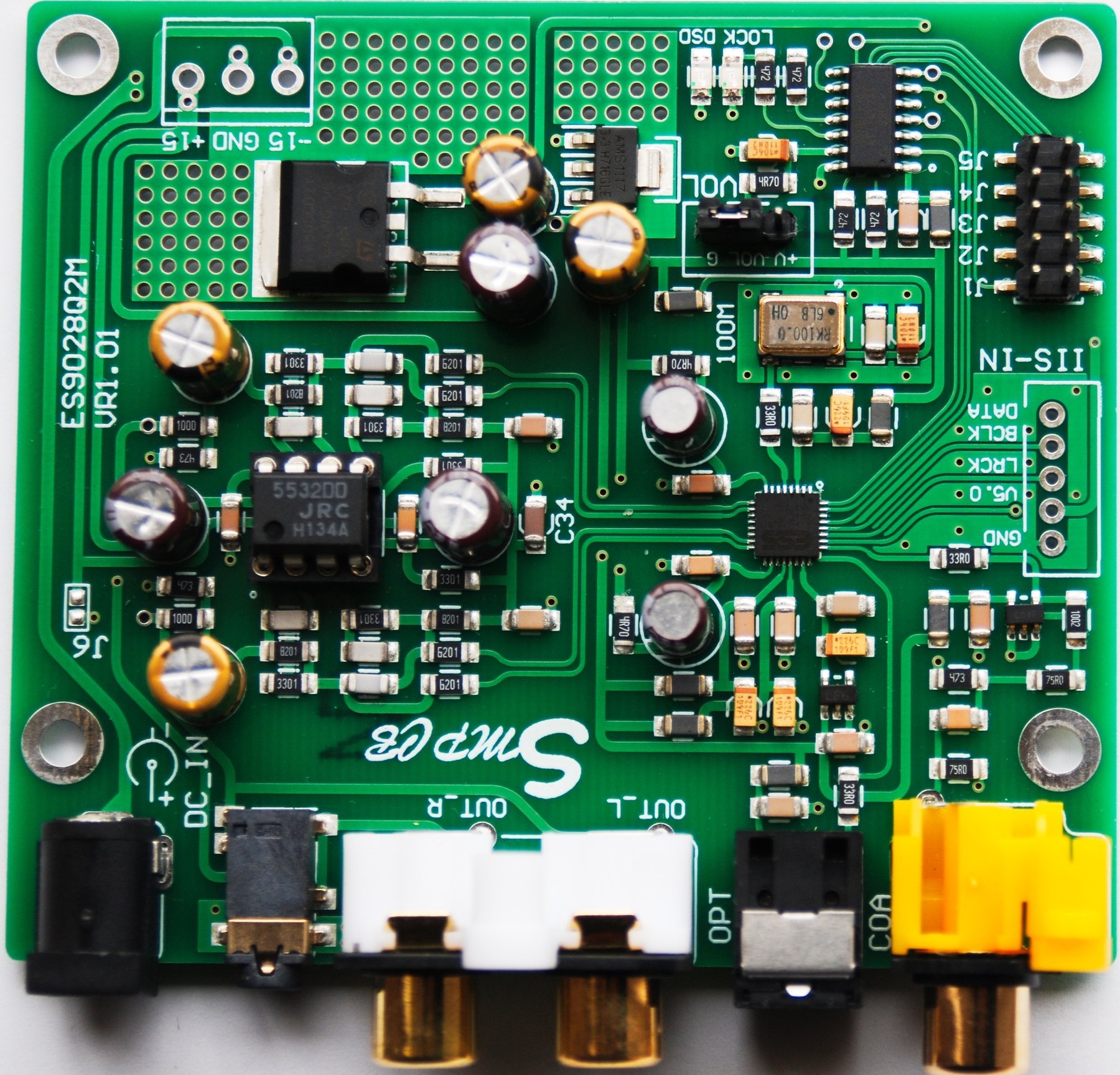
top of the board, untouched.
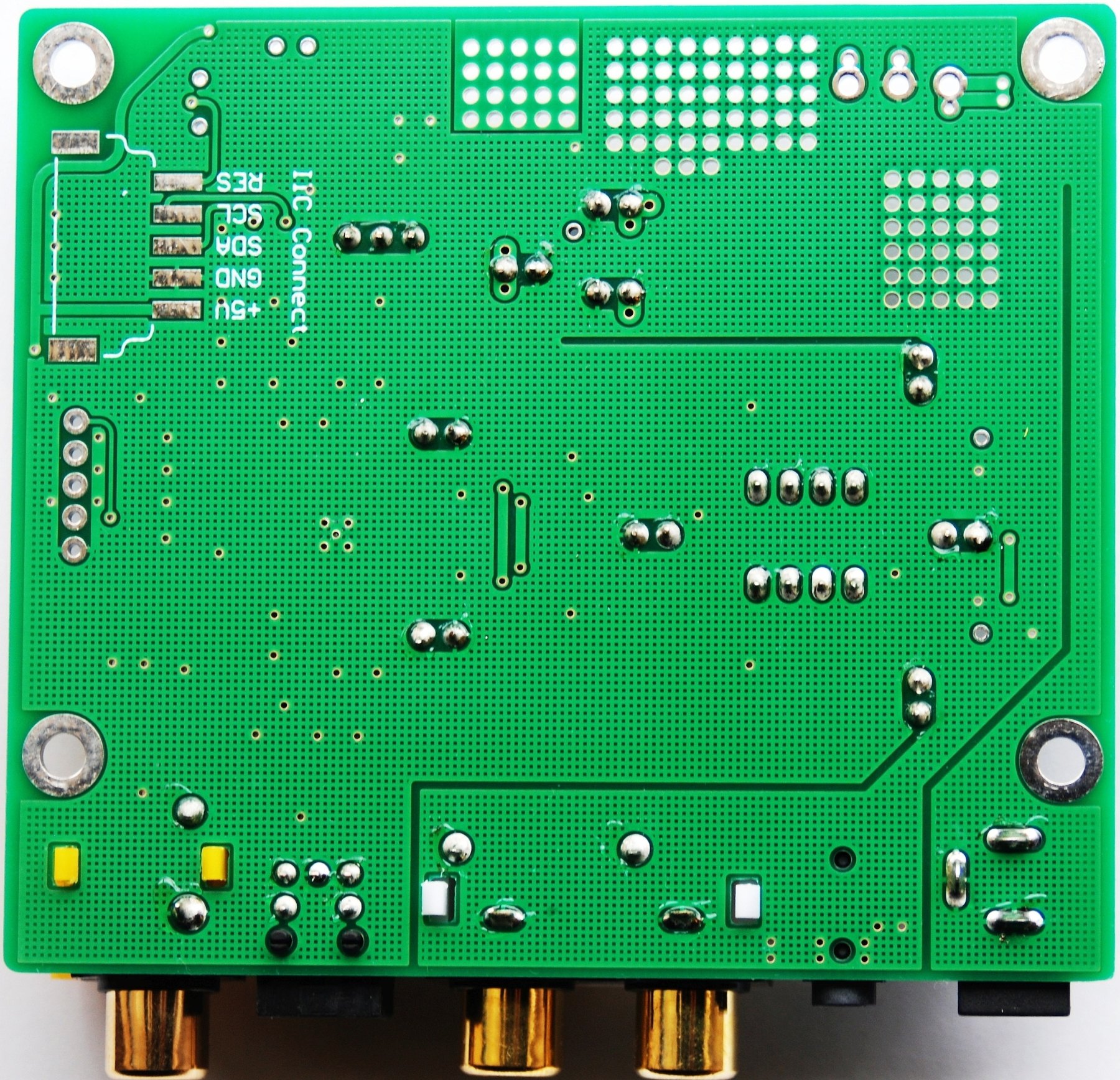
bottom of the board, untouched.
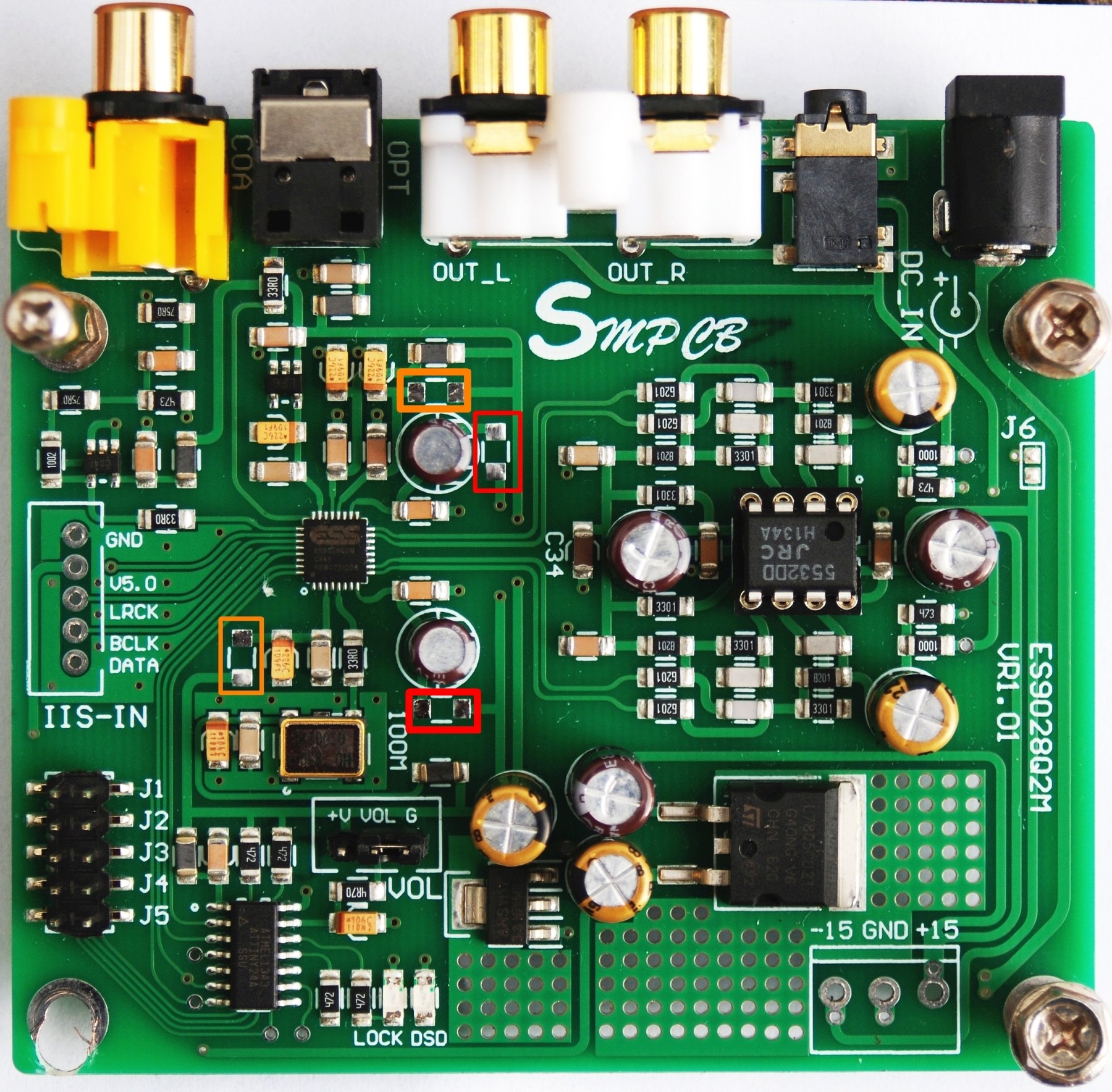
top of the board, 4 smd components out from the boad, avcc ( red ), vcca ( orange ).
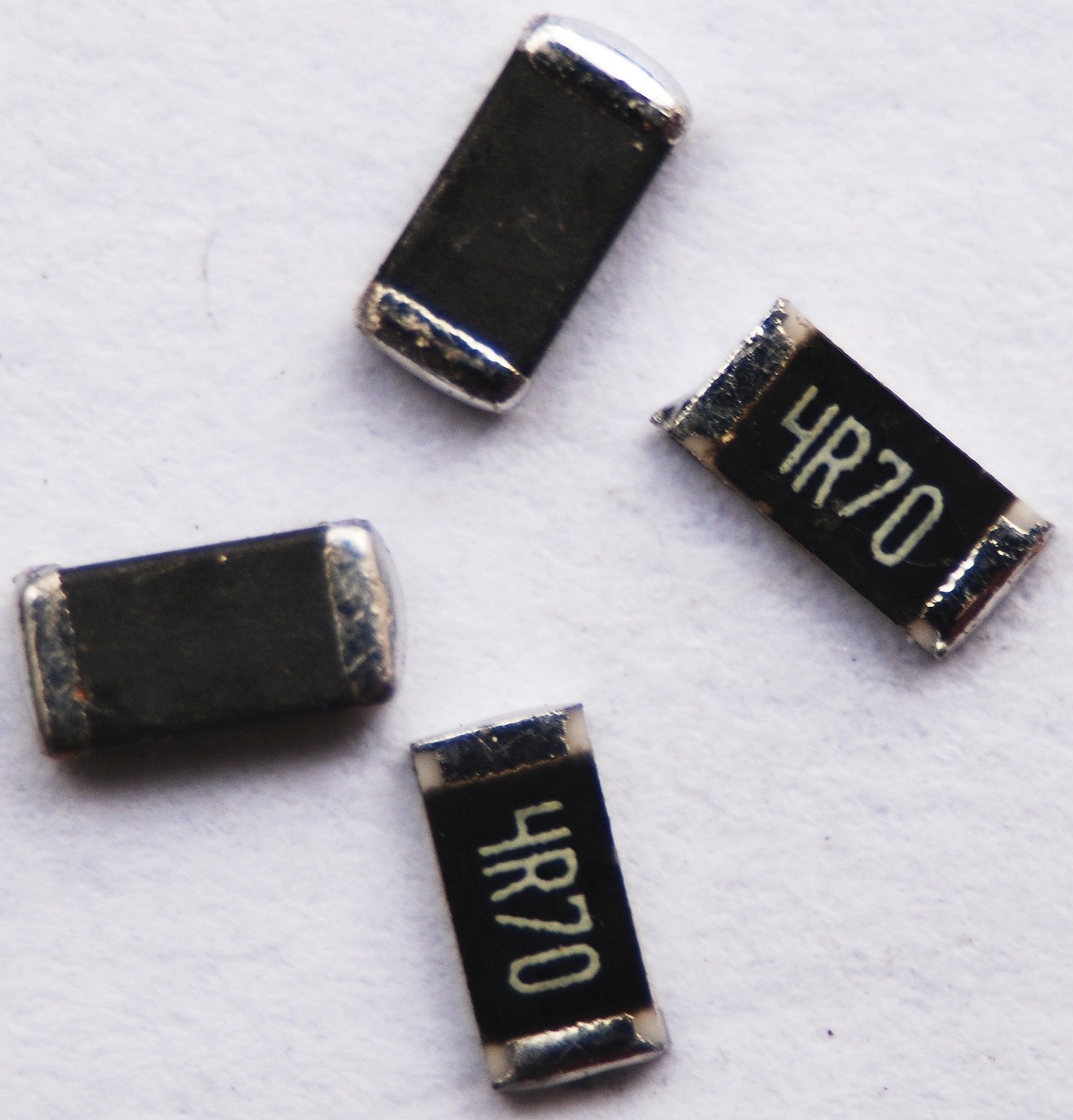
4 smd components out from the board.
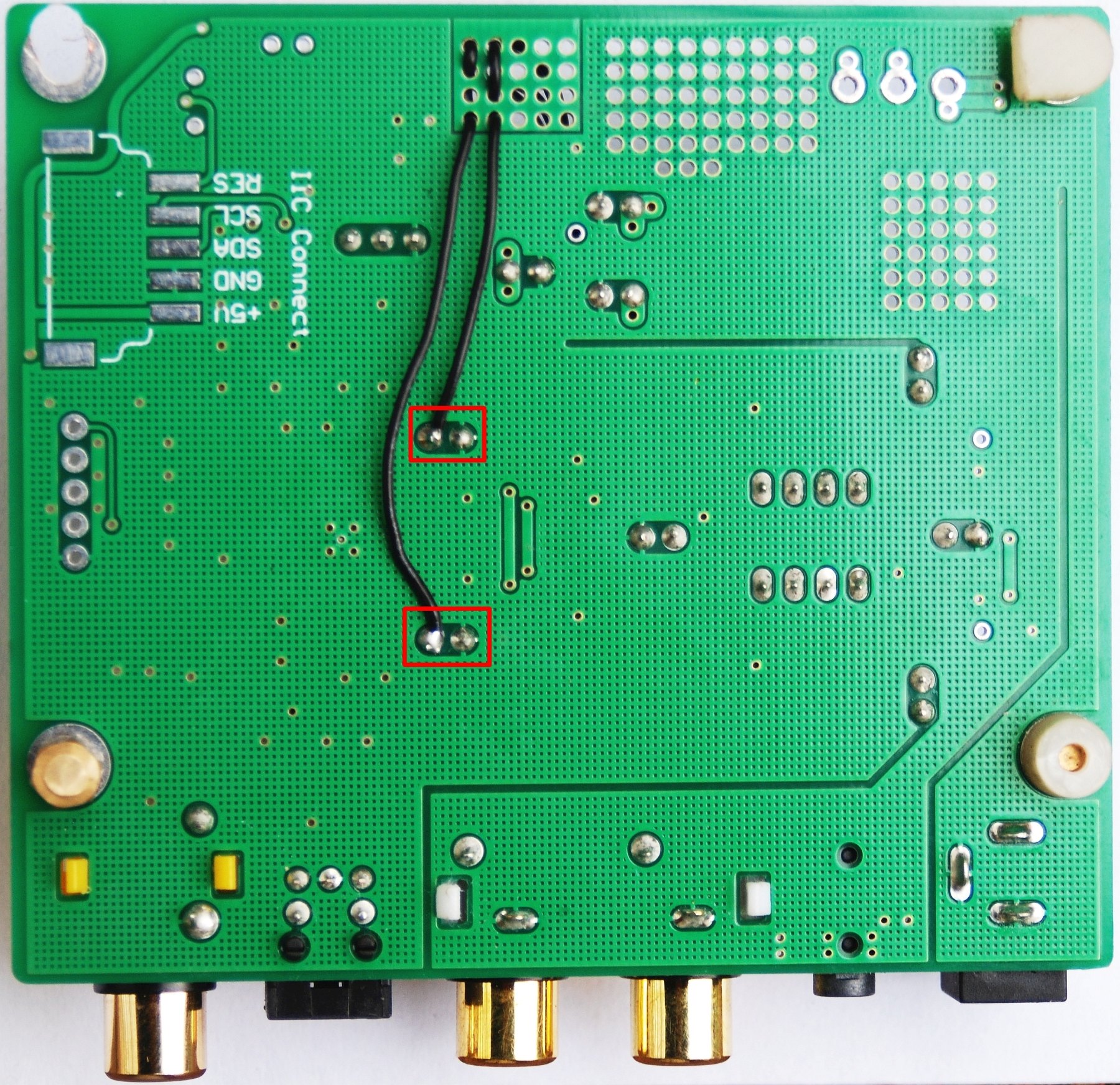
avcc wire ( red ).
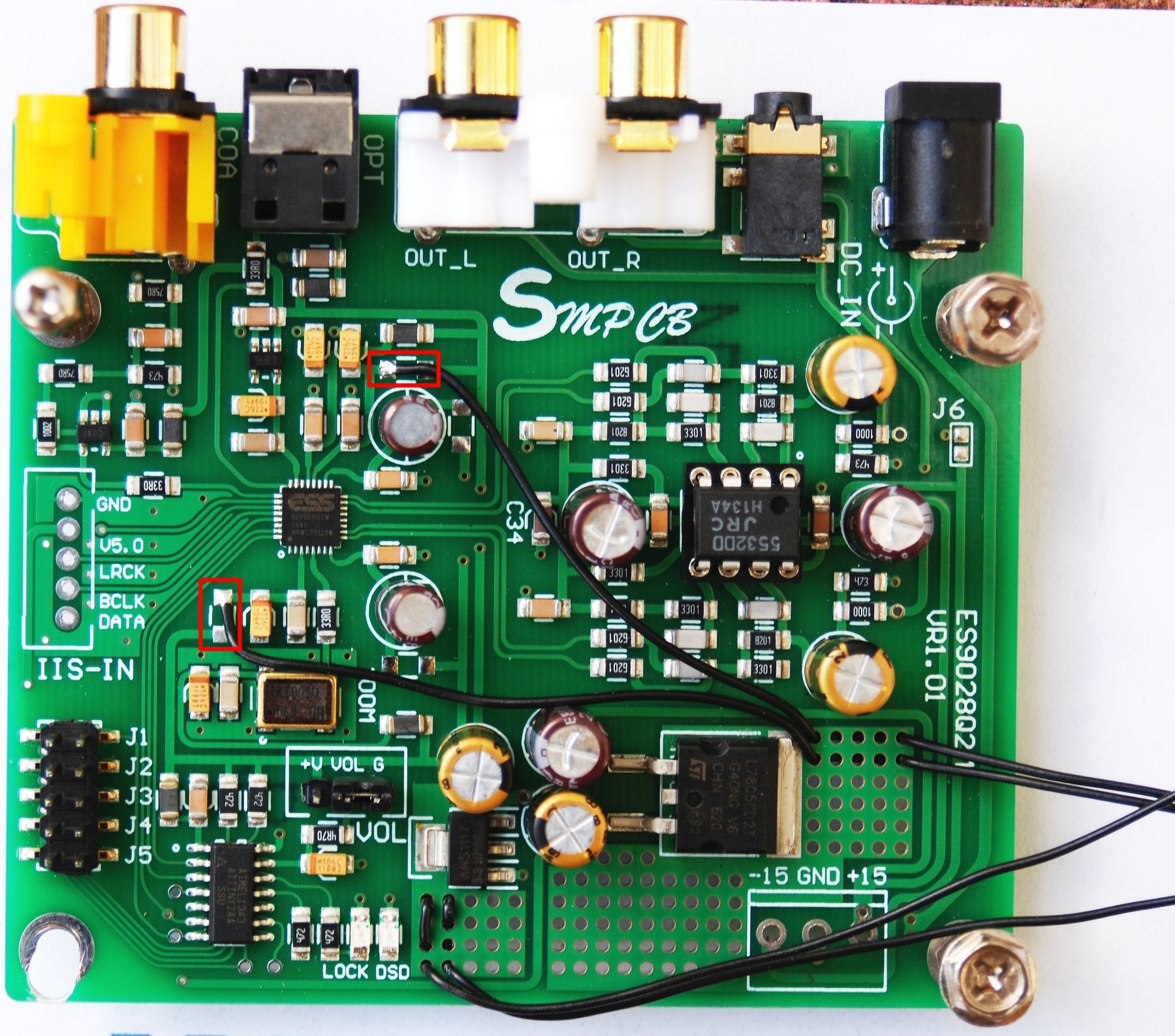
vcca wire ( red ).
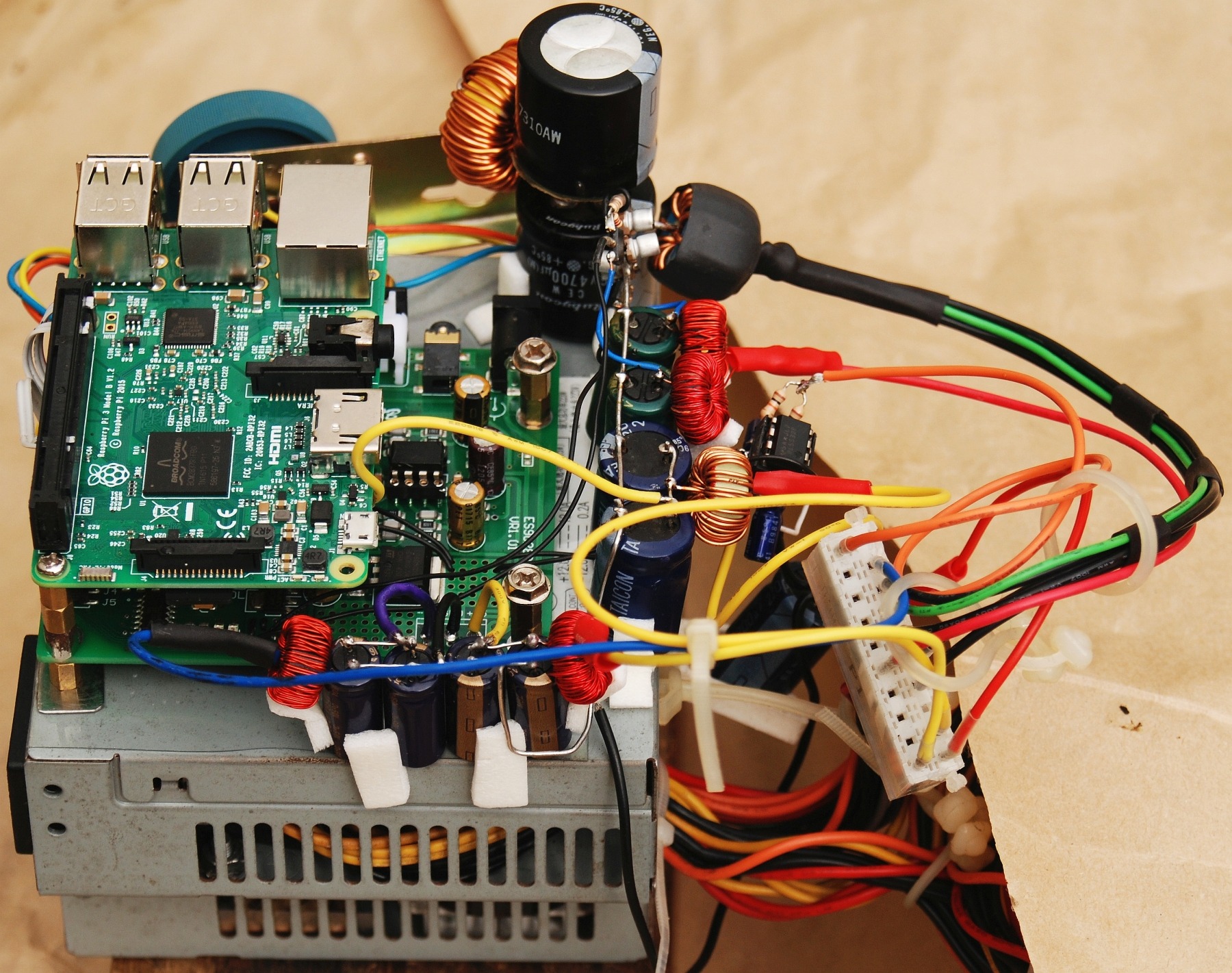
the dac, yes, use a recycled computer psu, all components are from recycled computer board.
rpi ...i2s...dac board_1
rpi ...i2s...dac board_2
...................................
rpi ...i2s...dac board_n
are the right comparing of the dac boards. anything like xmos, amanero or some kind of usb just an add on intermediary and should be avoided.
volumio v2.444 is available now and have 9028q2m driver, it looks like will take good control these 90X8 board. i'm working on the new volumio with a 9028q2m but going overseas next monday. some photos of the prototype at the moment, more details on september when back home.
top of the board, untouched.
bottom of the board, untouched.
top of the board, 4 smd components out from the boad, avcc ( red ), vcca ( orange ).
4 smd components out from the board.
avcc wire ( red ).
vcca wire ( red ).
the dac, yes, use a recycled computer psu, all components are from recycled computer board.
Attachments
Last edited:
They were prior to you receiving the AK4137 ?
No, I have had the more expensive version AK4137 board with SPDIF input capability for some time. What is new is that I was trying out a low cost board that is I2S/DSD input only.
Last edited:
@esli, Very resourceful use of old computer board parts! The I2S input from RPi and power supply mods all seem to make sense from what can be seen in the pictures. Looks like you have opted to stay with voltage mode output so far though. Any plans to do more with it? Or, maybe there could be a Katana happening sometime in your future?
No, I have had the more expensive version AK4137 board with SPDIF input capability for some time. What is new is that I was trying out a low cost board that is I2S/DSD input only.
...and how did the low cost board compare to the original for sq..?
Same SQ, so far as I can tell. I added some ground pins to help keep I2S transmission quality good at high sample rates. Also, had to make up some special interconnection cables for it. Pictures here: http://www.diyaudio.com/forums/digital-line-level/314935-es9038q2m-board-204.html#post5495993
There are also some extra ground pins added at the I2S connector on my modded Chinese dac board. Picture of that here: http://www.diyaudio.com/forums/digital-line-level/314935-es9038q2m-board-144.html#post5457773
There are also some extra ground pins added at the I2S connector on my modded Chinese dac board. Picture of that here: http://www.diyaudio.com/forums/digital-line-level/314935-es9038q2m-board-144.html#post5457773
Last edited:
Thanks for those links/photos Mark. Helps a lot.
I take it the extra ground pins are just drilled through and a little mask removed below for soldering ?
The connection to K-pins... I can see one (K1 ?)goes to the dsd pin on your usb to i2s board and there is a Gnd but what does K2 connect to ?
I take it the extra ground pins are just drilled through and a little mask removed below for soldering ?
The connection to K-pins... I can see one (K1 ?)goes to the dsd pin on your usb to i2s board and there is a Gnd but what does K2 connect to ?
I can see one (K1 ?)goes to the dsd pin on your usb to i2s board and there is a Gnd but what does K2 connect to ?
Have you read all the information in the ebay ad about how to hook it up and operate it? AK4137 I2S/DSD Sample Rate Conversion Board Supports PCM/DSD Interconversion DOP | eBay
It is pretty complete, but if there is part of it that doesn't make sense or seems unclear, maybe I can help with particular questions.
Last edited:
I did read that but got lost at....
perhaps the usb to i2s board I have is not compatible as it's outputs are not matching those mentioned...?
NEWEST XMOS U8 USB 384K 32B module I2S SPDIF output,support DSD for es9018 DAC | eBay
Set the signal input mode: first determine whether the input signal is a DSD signal or a PCM (I2S) signal. You can set the input mode through the D/P interface. Short the D/P interface input signal mode to work in the PCM (I2S) mode. The D/P interface input mode operates in DSD mode. The I2S/DSD-IN pin 1 can also be used to control the input mode. The I2S/DSD-IN pin 1 inputs the low level to the PCM input mode, and the high input to the DSD input mode. It should be noted that the D/P interface must be disconnected when using the I2S/DSD-IN interface pin 1 control input mode (cannot be shorted or it can only work in the PCM mode and may also damage the device providing the DSDON/DSDOE signal). When inputting the DOP signal, the input interface must be configured for the PCM mode.
perhaps the usb to i2s board I have is not compatible as it's outputs are not matching those mentioned...?
NEWEST XMOS U8 USB 384K 32B module I2S SPDIF output,support DSD for es9018 DAC | eBay
If you have one of the older XMOS boards with only one row of pins then you might have to manually configure the jumpers, depending. It could still work though. Same issue for the other more expensive AK4137 board. It can handle SPDIF automatically but it reads some of the pins on the USB board (if one is attached) to know some things about the input format.
The extra signals it needs are DSD_ON, F1, and F2. The first one indicates DSD or PCM/I2S mode, and the other two give sample rate information.
The extra signals it needs are DSD_ON, F1, and F2. The first one indicates DSD or PCM/I2S mode, and the other two give sample rate information.
Last edited:
Got it now....I think that the dsd pin will work to select when used on pin 1 of the i2s input.
Your K1/K2 had me confused until I reread this..and realised it applies to Amanero only and not Xmos.
Which makes more sense than 'Luigi and his mates plus the amputee...'
Your K1/K2 had me confused until I reread this..and realised it applies to Amanero only and not Xmos.
K1 is connected to the Italian interface 18 feet, K2 is connected to the Italian interface 19 feet
Which makes more sense than 'Luigi and his mates plus the amputee...'
Yeah, for some reason they say 'feet' instead of 'pin.' If there is DSD you will need F1 and F2 which some newer XMOS boards have. Otherwise you have to set the jumpers manually for DSD. The pin-1 DSD_ON signal can also be jumper selected at the D/P header. Just don't put jumpers on the SRC board if the Pin-1 and or K1/K2 are connected to corresponding pins on the USB board. The jumpers short those signals to ground which could burn up an output device on the USB board if not careful. That is my brief summary of part of what I think they are trying to say in the instructions. Hopefully, that is what you were asking about. If not, feel free to ask some more.
EDIT: Regarding extra ground pins, you have the right idea. On my dac board I had to remove the trace feeding power to the 5v pin at the I2S/DSD connection points in order to make room to put the extra ground pins. I was going to run a jumper wire to hook the 5v pin back up, but haven't done it since nothing has needed power from there so far.
EDIT: Regarding extra ground pins, you have the right idea. On my dac board I had to remove the trace feeding power to the 5v pin at the I2S/DSD connection points in order to make room to put the extra ground pins. I was going to run a jumper wire to hook the 5v pin back up, but haven't done it since nothing has needed power from there so far.
Last edited:
Oversimon, your work (#2161) looks great, do you have a schema of the SRPP circiut? Which tubes are installed there? Is Katana a commercial product? If was yes, it seems we are getting more and more free commercial about it?
@esli, Very resourceful use of old computer board parts! The I2S input from RPi and power supply mods all seem to make sense from what can be seen in the pictures. Looks like you have opted to stay with voltage mode output so far though. Any plans to do more with it? Or, maybe there could be a Katana happening sometime in your future?
Last edited:
Is Katana a commercial product? If was yes, it seems we are getting more and more free commercial about it?
Katana is a commercial product. So are the Chinese boards that we mod. In the past few days that we have been talking about Katana as a type of ES9038Q2M board, the number of views of this thread has gone up from about 200 per day to sometimes 1800 per day. That says to me that people are probably more interested in Katana as a way to get a good Q2M dac as compared to the option of doing a lot of work modding a Chinese dac board in order to get a to similar excellent sound quality result. It has always been my goal by participating in this thread to help people get high quality dacs at a low price. In my judgement, Katana qualifies as one possible solution for people interested in sound quality acceptable to what I think is really needed in a good dac. If some other Chinese or other source of ES9038Q2M dacs would like to bring a dac product to our attention for consideration I don't see a problem with that. It better be good though or I will say everything I can find wrong with it that might require modding to rectify.
Isn't katana just for using as a streaming player/DAC? It's not really for hooking up as a traditional DAC as most would know a DAC. I think that this best be clarified.
Since all my sources are on a NAS or could be put on it, I was looking at Katana as a nice solution but potential users need to know where it fits in the chain.
Since all my sources are on a NAS or could be put on it, I was looking at Katana as a nice solution but potential users need to know where it fits in the chain.
- Home
- Source & Line
- Digital Line Level
- ES9038Q2M Board
